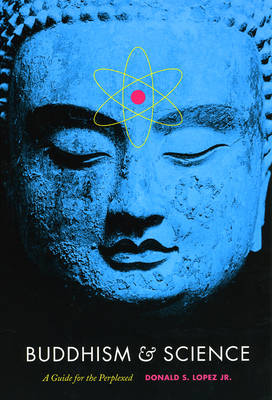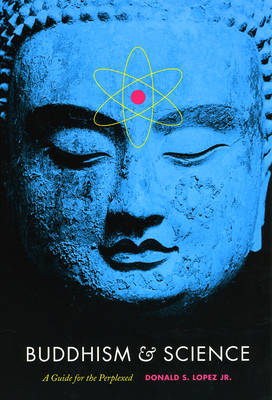
Door een staking bij bpost kan je online bestelling op dit moment iets langer onderweg zijn dan voorzien. Dringend iets nodig? Onze winkels ontvangen jou met open armen!
- Afhalen na 1 uur in een winkel met voorraad
- Gratis thuislevering in België vanaf € 30
- Ruim aanbod met 7 miljoen producten
Door een staking bij bpost kan je online bestelling op dit moment iets langer onderweg zijn dan voorzien. Dringend iets nodig? Onze winkels ontvangen jou met open armen!
- Afhalen na 1 uur in een winkel met voorraad
- Gratis thuislevering in België vanaf € 30
- Ruim aanbod met 7 miljoen producten
Zoeken
Omschrijving
Beginning in the nineteenth century and continuing to the present day, both Buddhists and admirers of Buddhism have proclaimed the compatibility of Buddhism and science. Their assertions have ranged from modest claims about the efficacy of meditation for mental health to grander declarations that the Buddha himself anticipated the theories of relativity, quantum physics and the big bang more than two millennia ago.
In Buddhism and Science, Donald S. Lopez Jr. is less interested in evaluating the accuracy of such claims than in exploring how and why these two seemingly disparate modes of understanding the inner and outer universe have been so persistently linked. Lopez opens with an account of the rise and fall of Mount Meru, the great peak that stands at the center of the flat earth of Buddhist cosmography--and which was interpreted anew once it proved incompatible with modern geography. From there, he analyzes the way in which Buddhist concepts of spiritual nobility were enlisted to support the notorious science of race in the nineteenth century. Bringing the story to the present, Lopez explores the Dalai Lama's interest in scientific discoveries, as well as the implications of research on meditation for neuroscience. Lopez argues that by presenting an ancient Asian tradition as compatible with--and even anticipating--scientific discoveries, European enthusiasts and Asian elites have sidestepped the debates on the relevance of religion in the modern world that began in the nineteenth century and still flare today. As new discoveries continue to reshape our understanding of mind and matter, Buddhism and Science will be indispensable reading for those fascinated by religion, science, and their often vexed relation.
In Buddhism and Science, Donald S. Lopez Jr. is less interested in evaluating the accuracy of such claims than in exploring how and why these two seemingly disparate modes of understanding the inner and outer universe have been so persistently linked. Lopez opens with an account of the rise and fall of Mount Meru, the great peak that stands at the center of the flat earth of Buddhist cosmography--and which was interpreted anew once it proved incompatible with modern geography. From there, he analyzes the way in which Buddhist concepts of spiritual nobility were enlisted to support the notorious science of race in the nineteenth century. Bringing the story to the present, Lopez explores the Dalai Lama's interest in scientific discoveries, as well as the implications of research on meditation for neuroscience. Lopez argues that by presenting an ancient Asian tradition as compatible with--and even anticipating--scientific discoveries, European enthusiasts and Asian elites have sidestepped the debates on the relevance of religion in the modern world that began in the nineteenth century and still flare today. As new discoveries continue to reshape our understanding of mind and matter, Buddhism and Science will be indispensable reading for those fascinated by religion, science, and their often vexed relation.
Specificaties
Betrokkenen
- Auteur(s):
- Uitgeverij:
Inhoud
- Aantal bladzijden:
- 278
- Taal:
- Engels
- Reeks:
Eigenschappen
- Productcode (EAN):
- 9780226493190
- Verschijningsdatum:
- 15/09/2010
- Uitvoering:
- Paperback
- Formaat:
- Trade paperback (VS)
- Afmetingen:
- 159 mm x 227 mm
- Gewicht:
- 421 g

Alleen bij Standaard Boekhandel
+ 70 punten op je klantenkaart van Standaard Boekhandel
Beoordelingen
We publiceren alleen reviews die voldoen aan de voorwaarden voor reviews. Bekijk onze voorwaarden voor reviews.











